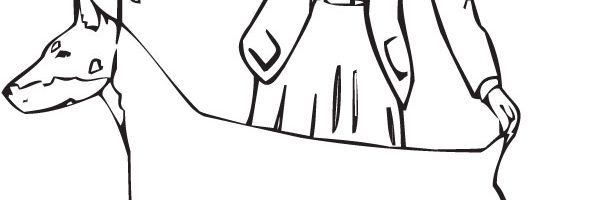(A Brief Overview)
By Claudia Batson
The test consists of several steps, each designed to evaluate a specific aspect of the dog’s temperament.
Entry into the testing area:
The ring secretary greets the exhibitor, verifies the identity of the dog and checks his tattoo. The dog’s collar is removed and replaced by a new one, attached to a long lead. Simple instructions are given to the master. The judge observes the dog’s reactions and behavior and evaluates its sociability.
Gunshots:
The dog and his master are asked to walk away towards the end of the testing area. One shot is fired in the air at a minimum distance of 20 meters while the pair has its back to the tester. When the exhibitor and his/her dog reach the spot they were sent to, they turn to face the judge and another gunshot is fired in the air. Should the dog’s reaction be somewhat unclear, it is possible the tester may fire one or more shots. The purpose of this exercise is to evaluate the dog’s sensitivity and emotivity.
Threat with a stick:
The judge then walks toward the dog and his master. When he is at about 2 meters away from the pair, the judge threatens the dog with the stick, swinging a three-foot stick in a downward fashion. The threat takes place only once the dog is aware of the presence of the tester and not less than two meters away. Should the dog react with fear, the tester will not put any more pressure on the dog. However, in case, the dog’s reaction is not clear to the tester, it is possible that he may pretend to attack the master thus getting a positive reaction from the dog. The purpose of this exercise is to evaluate the courage of the dog.
The dog and his master return to the starting point where the tester interacts with the team. The dog is expected to have recovered from the test and will allow the tester to approach him and his master. The collar and leash used for the test are removed and after the dog is fitted back to his own collar and leash, the exhibitor and his dog leave the judge’s station. The sociability of the dog is evaluated during his entry and exit of the testing area.
IMPORTANT: Please note that at NO time during the testing is the owner/handler allowed to correct or talk to his dog. The purpose of the test is to evaluate the innate qualities of the dog’s temperament: his sociability, his sensitivity, and his courage. These three simple exercises are set up a way that is NOT traumatizing to the animal, yet still give a good indicator of the steadiness of temperament that is required in a good Beauceron.
© 2005 C. Batson. Used with permission.

